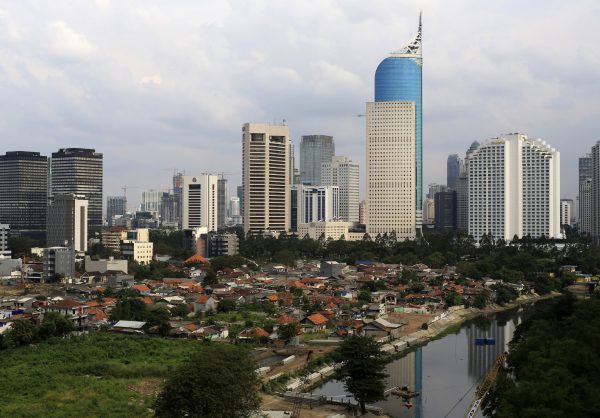In the 2016 report Indonesia’s Rising Divide, the World Bank claimed that ‘inequality in Indonesia is rising rapidly’, and that the increase in the Gini coefficient of household consumption expenditure in the 1990s and the 2000s was one of the highest in the Asia. Data on the share of total wealth owned by the top one per cent of households published by Credit Suisse shows that Indonesia had one of the most skewed distributions in the world in 2014, surpassed only by Thailand and Russia.
Other analysts tend to support these findings. For example, an OXFAM report published in 2017 argued that the gap between the richest and the rest in Indonesia is increasing faster than any other country in Southeast Asia.
But these findings are subject to some important caveats because of data limitations.
Crucially, Indonesian household surveys on which most estimates of expenditure inequalities are based (known as the Susenas) are criticised for under-reporting the expenditures of richer households. By the 1990s, the expenditure figures reported in the Susenas were around 50 per cent of those derived from the national accounts. A decade later, the percentage was even lower.
Such disparities are also found in other parts of the developing world. This makes estimates of inequality based on survey data at best problematic, and at worst highly misleading. Given that the problem of under-reporting varies over time and across countries and regions, international comparisons of inequality indicators — and even comparisons within countries over time — are liable to error.
In Indonesia, the central agency Statistics Indonesia has been aware of the problems with the Susenas for several years. In 2011, they made substantial changes to the sampling methodology, almost doubling the number of primary sampling units. There are ongoing debates about the extent to which these changes improved the accuracy of the Susenas — but they do mean that inequality estimates from 2011 onwards are not strictly comparable with those from earlier years. This point was acknowledged by the World Bank’s 2016 report, but has been ignored by several subsequent analysts.
In 2007, Statistics Indonesia also changed the way it estimated the Gini coefficient from using grouped data to individual data. This led to an increase in reported Gini estimates. To be consistent, one should use a series based on individual data, as was done by Yusuf, Sumner and Rum in a paper published in 2014. Their estimates show a decline in the Gini coefficient and other inequality estimates after 1996, and an increase after 2000.
Their estimates of the ratio of mean expenditures of the richest 10 per cent of households to the poorest 10 per cent also declines between 1996 and 2000. The ratio increases after that, although in 2009 it was little different from that in 1996. After 2009 there was another increase — although this must have been partly due to the change in sampling methodology, which the authors did not discuss.
If the estimates of inequality derived from the Susenas are more consistent after 2011, what do they show us? Estimates of the Gini coefficient of household expenditures published by Statistics Indonesia showed little change between 2011 and 2015. Since then there has been a fall from 0.41 in 2015 to 0.38 in 2019 for the country as a whole. Estimates for urban areas are somewhat higher, although they too show a decline after 2015.
Perhaps given the ongoing problems with the Susenas, it would be unwise to give too much weight to these figures. Interviews with staff at Statistics Indonesia in May 2019 conducted with economists from TN2PK made it clear that they are still worried about under-reporting of expenditures by upper income groups. The gap between the Susenas estimates and the national income estimates remains large and is a matter of serious concern to Indonesian statisticians.
Even if the evidence of increasing inequality in Indonesia since 2000 is based on fragile data, this hardly means that inequalities in income and wealth are not serious or a matter of mounting public concern. Growing inequality makes poverty reduction more difficult, as any given rate of economic growth will be less effective in reducing poverty.
There is now little support for the argument that Indonesian growth in recent decades has been particularly egalitarian, at least by Asian standards. The Jokowi administration in its first term increased spending on a range of social protection policies both in absolute terms and relative to GDP. In his second term he is pledging to further improve access to public services and make basic needs affordable for all Indonesians. It remains to be seen to what extent he will succeed in these aims.
Anne Booth is Emeritus Professor at SOAS University of London.

